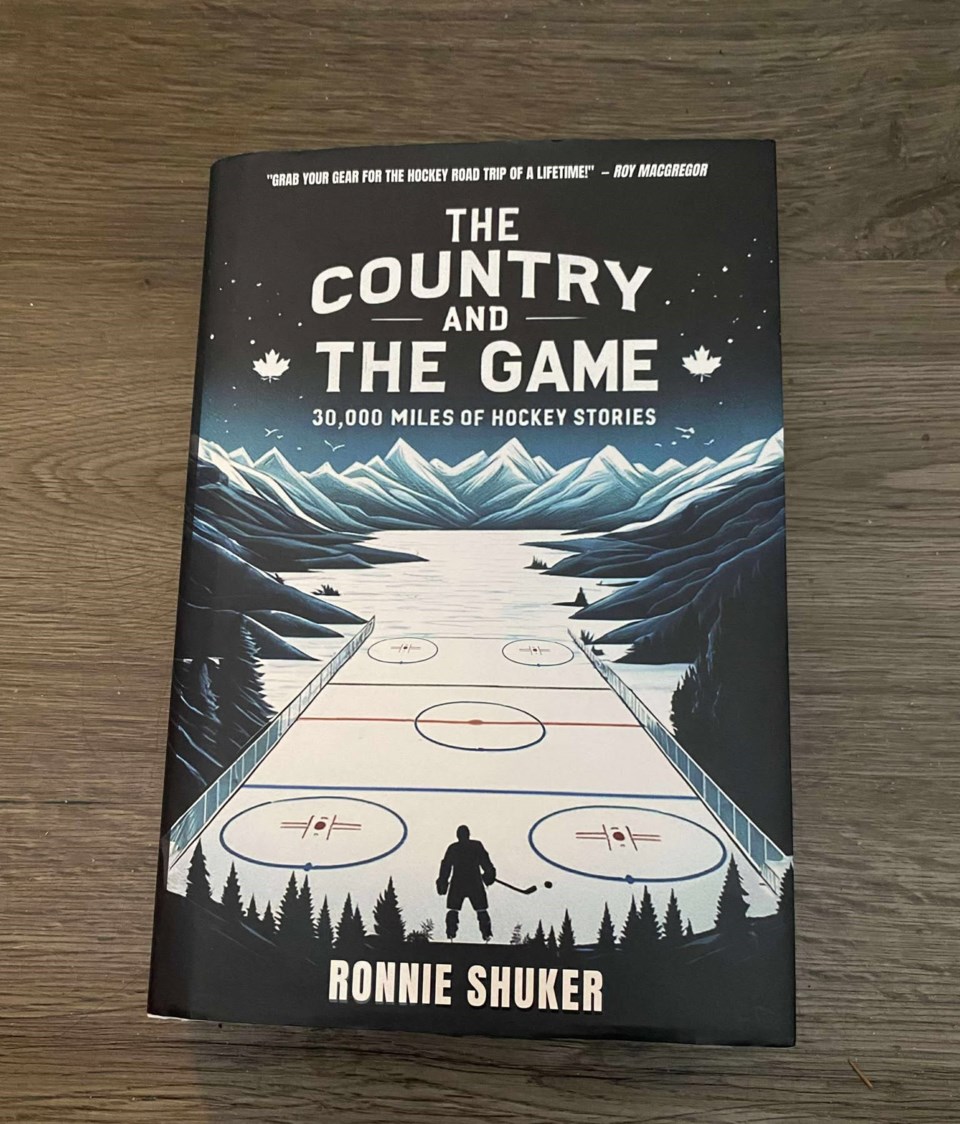YORKTON - Over the course of a year – in part to fill this space twice weekly – yours truly reads a fair number of sports books.
None in recent memory have been better than The Country and the Game: 30,000 Miles of Hockey Stories by Ronnie Shuker and published by Sutherland House.
Really this is a book that from its premise alone promised to be something rather special.
“In the waning days of the pandemic, sportswriter Ronnie Shuker stuffed his skates, sticks, and backpack into his faithful automobile, Gumpy, named for legendary goaltender Gump Worsley, and set off on a 30,000-mile, coast-to-coast-to-coast investigation of the many ways hockey touches the lives of Canadians,” details the publisher page.
It doesn’t take much thinking that if you crossed Canada looking for hockey stories you were likely to find hundreds – the game and the country being near synonyms for each other.
Shuker said the idea was largely one that came to him to fill a desire to see the country he calls home.
“It was really just a way for me to see the country,” he said in a recent Yorkton This Week interview, adding a rather long journalism article sort of morphed into the coast-to-coast-to-coast pilgrim of hockey.
And there were stories to be found because the game really is everywhere.
“On the outskirts of town, Bonavista greets visitors with a pair of billboards outside Cabot Stadium: one of Ryder, dressed in the bold black and gold of the Boston Bruins, and the other of Pardy, in the fiery red and yellow of the Calgary Flames. All across Canada, signs like these, praising local NHL progeny, are often the first thing tourists see on their way into town: Sidney Crosby and Nathan MacKinnon in Cole Harbour, Nova Scotia; Jordan Binnington in Richmond Hill, Ontario; Claude Giroux in Hearst, Ontario; Jordon Tootoo in Rankin Inlet, Nunavut; and Zach Whitecloud in Sioux Valley Dakota Nation, Manitoba. Radisson Saskatchewan’s Bill Hajt is probably the only player in the world to have had both a welcome sign and his own personalized fire hydrant. Kelvington and Foam Lake, Saskatchewan, portray the players they’ve catapulted to the NHL, on oversized hockey cards, while the tiny farming community of Foxwarren, Manitoba, proudly lists the five it’s produced on its welcome sign. It is through these and other players that many people learn the bits of small-town Canadian geography they know. After all, if not for Bobby Orr, few would know about Parry Sound, Ontario, and if not for Gordie Howe, even fewer would’ve ever heard of Floral, Saskatchewan. It is only because of Ryder and Pardy that I can now place Bonavista on a map,” wrote Shuker.
In regards to stories Shuker said it was almost overload in terms of wrangling the trip into a book.
“I could have written a book on every single province and territory,” he said, adding his initial draft was chopped by a third to meet the publisher “strict page count” (233 pages).
As a reader I wish the publisher had been more elastic and left more stories here – I wanted them.
So maybe there is a volume 2?
“If I was going to be a volume two I’d look to do the same book in the U.S.,” said Shuker.
Interestingly, while this is a hockey book it also very much about the country too. In fact Shuker acknowledges that for him it was the country that was most gratifying “just seeing my country.”
While Shuker travelled 30,000 kilometres he noted that he saw very little of a country the scale of Canada.
“I’ve really still only seen a fraction of the country,” he said.
As for the hockey, Shuker said “I love watching the NHL, especially in the playoffs” in the book he shied away from most big names to concentrate on hockey for the masses “where hockey is for most people.”
In that regard hockey really lives in small communities.
“That is the main difference between hockey in big cities and the game in small towns. In urban areas, hockey is too often a schedule slapped on the refrigerator, or an NHL pipe dream that parents push upon their kids. In places like Rankin Inlet, Labrador, Eeyou Istchee, and the Cree communities around James Bay, the game is part of the cycle of life, seamless and fluid, with the entire town pulling in the same direction,” wrote Shuker.
The trip sort of rejuvenated the author’s interest in the game.
“I love the game more than ever after the book,” he said.
You can see that in his writing.
“On game day, there is an anticipation that comes with knowing there’s going to be hockey that night. It gives the drive to the arena, however long or short, a distinct feel to it. As a kid, it was always pure excitement. As a teenager, it was a mix of nervousness and dread. Now, as an adult, it is a blend of gratitude and contentment,” wrote Shuker.
“. . . That first step onto a clean sheet of ice never gets old. Sometimes it is a soft step for some shinny or an easy glide before a practice. Other times, it is a launch through the gates. But every time there is a vigor to it, a vitality that shoots up from the ice, conducted by the blades into the body.”
Grab this one hockey fans, (sutherlandhousebooks.com/product/the-country-and-the-game), it is a gem.






